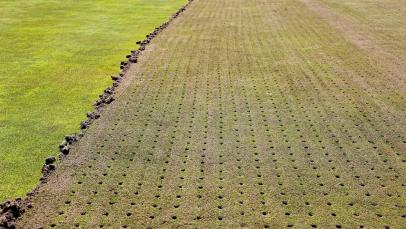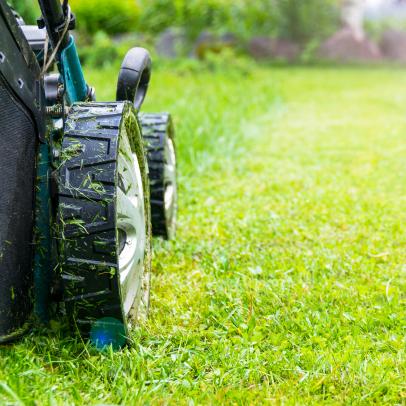Winter golfers shouldn’t be course-condition critics, but we are. For golfers living in north climates and squeezing in January or February rounds, you might be playing on temporary greens—often cut to fairway height—and asking, “Is this really necessary?”
To learn more about the risks of playing on regular greens during the winter, we talked with Paul Dotti, Director of Grounds at Arcola Country Club, which co-hosted the U.S. Amateur in 2022 and ranks among the top 20 golf courses in New Jersey. Under Dotti’s leadership, the Paramus track ranks among the best conditioned courses in the tri-state area, according to our panelists.
 Private Arcola Country Club Paramus, NJ 4.6 65 Panelists
Private Arcola Country Club Paramus, NJ 4.6 65 Panelists
- Best In State
Big and brawny Arcola Country Club continues to get better year after year—as competitors found out at the 2022 U.S. Amateur when it co-hosted stroke-play qualifying with neighboring Ridgewood Country Club. Robert Trent Jones redesigned the course in the 1950s after the state acquired part of the property through the construction of the nearby Garden State Parkway, which eliminated four existing holes. Paul Dotti, the club’s Director of Grounds since 2009, has conducted some major projects to elevate Arcola’s stature in the state, performing major drainage work, tree removal, and rebuilding and reshaping bunkers and fairways. Dotti’s crew maintains some of the best conditioned playing conditions in the tri-state area—a bold statement given the depth of great layouts with incredible maintenance staffs—but on any given day, golfers will encounter firm-and-fast conditions with putting surfaces rolling above 14 on the Stimpmeter. The championship venue also hosts the annual Arcola Cup, which hosts some of the best amateur players in the area. Explore our full review
Dotti says the decision of whether to close the greens during colder months largely depends on grass type. “If you have bentgrass, it goes dormant earlier in the fall and wakes up later in the spring,” he says. “Poa annua is more active in the fall and gets going earlier in the spring.”
RELATED: Why your superintendent is hoping for lots of snow this winter
Since Poa is more active in cooler temperatures, it can better withstand the ball marks and foot traffic of winter play. If your course has bentgrass greens, on the other hand, your superintendent may be reluctant to allow play on them during the winter, Dotti says.
“Bent doesn’t recover as well from traffic,” he says. “If you constantly have foot traffic, then all winter, bentgrass greens will start thinning, and they just can’t recover.”
More From Golf Digest  Bucket List 10 courses I really want to play in 2024
Bucket List 10 courses I really want to play in 2024
Much of the damage occurs when temperatures are mild during the day and below freezing at night, causing the greens to constantly freeze and thaw. When that happens, Dotti says, the top layer of the greens begins to thaw, which creates plenty of footprints and further problems.
Normally during the warmer months, footprints and ball marks heal quickly, but colder temperatures prevent the grass from recovering. “When you get ball marks in the winter, that becomes a problem,” Dotti says. “They don’t heal, and foot traffic doesn’t heal. You also can’t change cups to move the wear patterns around.”
“You’ll begin to damage the soil structure by having footprints on them,” he continues. “Ball marks will recover over time, but winter is a time for the greens to get a break and recover from the season before.”
More From Golf Digest  Course maintenance Aerating greens, explained by a top course superintendent
Course maintenance Aerating greens, explained by a top course superintendent  Ask a super 7 home lawn care tips from golf course superintendents
Ask a super 7 home lawn care tips from golf course superintendents  Course maintenance Why your superintendent is hoping for lots of snow this winter
Course maintenance Why your superintendent is hoping for lots of snow this winter
It may sound like Dotti is firmly against leaving the greens open during the winter, but not so. At Arcola, he strives to leave 18 greens open all winter. He can do that because when ball marks fill in during the spring, Poa annua grows. Since Arcola has Poa greens, Dotti wants as much Poa as he can get, unlike courses with bentgrass greens, where the new Poa spots would cause uneven playing surfaces.
To prepare for the winter, Dotti aerates the greens at the end of the season and top dresses them with sand to “protect the crown of the plant,” he says. “Soft spikes leave marks on the green, so if we can put a nice coating of sand on the greens, they’re still puttable.”
Whether a course has bent grass or Poa annua greens, Dotti recognizes that every superintendent has their own opinion on whether greens should stay open through the winter. During a mild winter like we are experiencing so far this year, that decision may be more important than usual, given the constant freezing and thawing.
“What you do with the greens in January and February can hurt you and people don’t realize it could come back and bite you in July,” Dotti says. “Damage to the soil structure or the actual plants themselves doesn’t show up until it gets pretty hot out.”
• • •
Explore Golf Digest’s new Course Reviews section where you can submit a star rating and evaluation on all the courses you’ve played. We’ve collected tens of thousands of reviews from our course-ranking panelists to deliver a premium experience, which includes course rankings, experts’ opinions, bonus course photography, videos and much more. Check it out here!
This article was originally published on golfdigest.com



